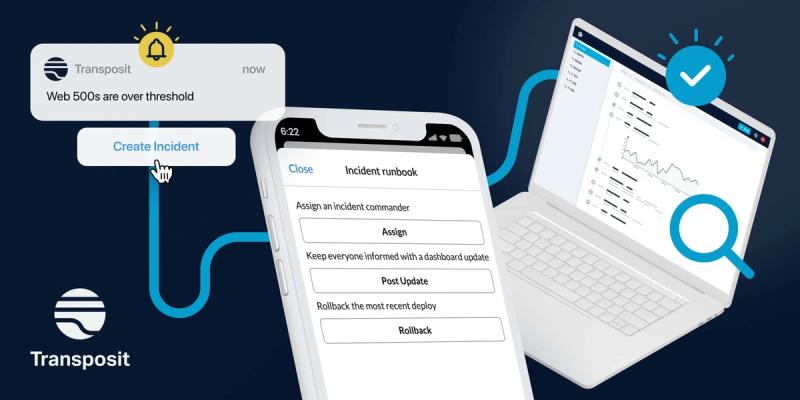Hybrid Is Here: Making This Workplace Model Successful for IT & Operations Teams
Strategies for navigating 3 common challenges facing organizations across the globe

The rapid shift to fully remote work in the wake of the COVID-19 pandemic was a challenge even for the most technologically savvy organizations. Now, many companies are shifting once again — to a hybrid workplace model. According to a recent poll by Morning Consult, “three-quarters of adults who are able to work remotely would like to do so at least 1-2 days a week." Enabling this structure is not an easy feat. For IT and engineering operations teams, it presents additional layers of complexity to their processes and responsibilities. Successful hybrid work environments require the facilitation of both in-person and remote forms of collaboration, real-time synchronization, and data collection that is supported by technology. It also requires the culture and policies that are built to support distributed work.
Let’s examine three challenges the hybrid model may present to operations teams and some strategies that can help organizations navigate them successfully.
Challenge: Extended or shifting “work hours”
While the nature of on-call work often meant some level of after-hours work for SRE, DevOps, and ITOps teams, hybrid and flexible work environments and policies will only kick this into high gear. Supporting distributed teams working in different time zones or with more flexible schedules will require extended IT support and services. As a result, it is more important than ever that operations teams are able to document processes and communicate both asynchronously and in real-time.
Solution: Implement dynamic documentation and centralize communications
Dynamic documentation consists of rich, real-time information, functioning as a live, managed-as-code, data-centric, and integrated center of knowledge. This enables teams to function asynchronously and still have access to the most up-to-date information and processes, no matter where, or when, they are working. The benefit of using dynamic documentation over static wikis is that it provides an account of both human and machine data, so there is a complete record of all interactions, changes, and decisions. You can also access dynamic documentation directly through your preferred system of engagement, such as Slack or Teams, which will help to centralize information in one place. Equally important is establishing a single hub for team communications — this ensures everyone is operating off of the same data and information and prevents misinformation or knowledge gaps amongst the team.
Challenge: Increased operations workload
The accelerated pace of digital transformation efforts coupled with the new demands of supporting a distributed workforce points to increasing pressure on DevOps and ITOps teams. In addition to their established operations work and incident management responsibilities, the implications of the shift may include:
- Enabling remote-support and remote-management tools
- Increased cloud enablement of all software
- Developing, onboarding, tracking, and/or maintaining new tools across departments
- Revising security and identity protocols for remote access
- Managing increases in ticket volume and service requests
- Partnering with HR for policy monitoring and enforcement
Solution: Embrace human-in-the-loop automation to reduce toil and increase innovation
In our 2021 State of DevOps Automation study, operations professionals reported automation as a key to balancing rapid delivery with reliability. Leveraging human-in-the-loop automation will balance day-to-day operations workloads and reduce toil by allowing machines to automate repetitive, predictable tasks. Since people continue to play an important role in the systems they manage, they are brought in at significant decision points in the process to increase flexibility and stability. This also re-orients the team’s time towards higher-order development and operations work that requires human judgment and insight, which will both increase opportunities for innovation and reduce work overload.
Challenge: Maintaining a positive culture and work environment for both in-office and remote experiences
Hybrid work policies promise the advantages of both forms of work — in-person opportunities to connect and collaborate balanced with increased flexibility and freedom. However, managing varied employee experiences can easily lead organizations down a path that can both hinder their employees and their bottom line. This could take a variety of forms:
- Neglecting or limiting exposure of remote employees to new projects or senior leadership
- Lack of transparency or inconsistent communication amongst members of a team
- Inequitable access to mentorship opportunities for in-person vs remote employees
- Failing to recognize the contributions of remote employees in a meaningful way
- Not providing opportunities for team-building that is inclusive of remote and in-person employees
Solution: Develop a human-centered and inclusive culture focused on improvement
By prioritizing people and enabling a process of “continuous feedback” that supports the needs of both internal and external customers, operations teams can avoid falling into the traps outlined above. Here are a few strategies to support facilitating a human-centered culture:
- Define and document processes for recognition of employees and their work. Ensure the selection process and “celebration” are equitable and accessible to all employees.
- Roll out internal technology and tools that enhance transparency, resource allocation, hybrid collaboration, and flexible ways of working.
- Be intentional about team-building. Keep a consistent schedule of planned opportunities for engagement that vary between the entire team coming together in person, localized or region-based opportunities to connect, and virtual team-building activities that team members can participate in regardless of location.
- Create opportunities to collect feedback and develop a plan to iterate upon your processes and policies.
The hybrid work environment will vary significantly from organization to organization based on the size of their workforce, their industry and field of work, and the culture they seek to cultivate. What remains clear is that the future of work, and operations, will only continue to evolve. At Transposit, we are excited to support organizations as they adapt to this flexible new reality and its implications for engineering and operations teams.




